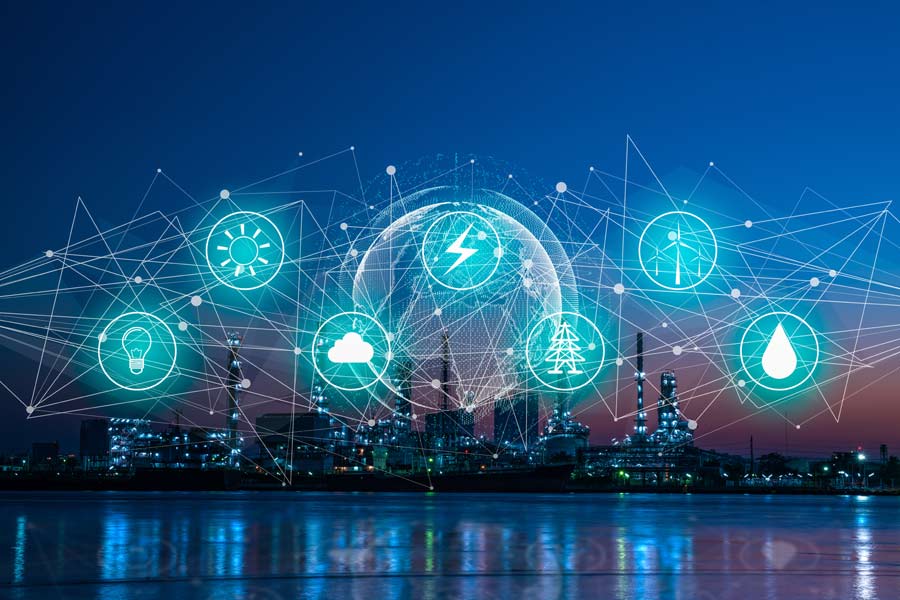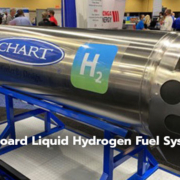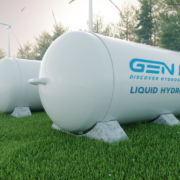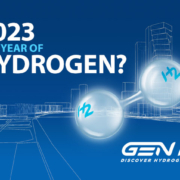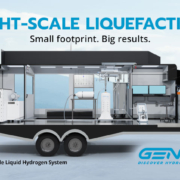Hydrogen A to Z Series: E For Energy
By: GenH2 Staff
Read Time: 3 minutes
Defining the Hydrogen Economy from A to Z: E is for Energy
Continuing in our defining the Hydrogen Economy from A to Z series, we are focusing on the letter E and discussing energy – and how that relates to Hydrogen as an energy carrier. A classical definition of energy is the ability of a system to perform work. Because energy is somewhat of a mystery, another definition of energy could be “the stuff that makes stuff do stuff”.
Energy is so important in our daily lives because it helps us live our everyday lives. We use energy to heat and cool and is necessary for daily activities like getting up out of bed, walking down the street, or even lifting your finger. As already familiar, energy is defined as “the capacity or power to do work,” such as the capacity to move an object of mass by applying force. Energy can exist in a variety of forms, such as electrical, mechanical, chemical, heat, or nuclear, and can be transformed from one form to another and is usually measured in British thermal units (Btu) or Joules (J). With Hydrogen, the mean ones are chemical, heat and electrical.
Familiar energy sources can be grouped in categories as “renewable” and “non-renewable”. In moving towards a cleaner energy future, it is important to focus on renewable energy which is derived from natural processes that can be replenished such as solar, wind, ocean, hydropower, biomass, geothermal resources, biofuels, and hydrogen. Well known non-renewable energy sources like coal, oil and natural gas fossil fuels are non-renewable sources of energy which when used, the source is gone for good.
Digging deeper into the other associated words with renewable energy is energy content, energy density which was discussed in last week’s blog on density and specifically Hydrogen as an energy carrier. Energy content is the amount of energy for a given weight of fuel or in this case, hydrogen as an energy carrier, and energy density is the amount of potential energy in each measurement of a fuel or hydrogen and can be separated into gravimetric and volumetric energy densities. Hydrogen is also directly used to create electricity. Hydrogen is an energy carrier that can be used to store, move, and deliver energy from other sources, and GenH2 is specifically focusing on Liquid Hydrogen or cryo-compressed Hydrogen as the energy carrier of choice.
Referencing Fesmire in Cold Facts article, “The Big Picture of Energy Storage”, we ask what does cryogenics or cryo-compressed Hydrogen have to do with energy? In short, cryogenics and energy are like two sides of the same coin. The rejection of heat creates an object or region with a colder temperature, and this process primarily requires power input. The two categories of cryogenics, cold applications and energy density, are highly interdependent and cryogenics and energy are inextricably linked.
The cryogenic energy storage approach for renewable energy allows for Hydrogen as an energy carrier in meeting the global need for matching up the highly variable supply of renewable energy with user demand in land, sea, and air applications as we move towards a cleaner energy future.
Please follow us in the coming weeks as we discuss other Hydrogen associated words, like Electrolysis, which is one of the important methods of producing renewable Hydrogen that can be further densified using liquefaction process to bring about this very efficient energy carrier medium.
